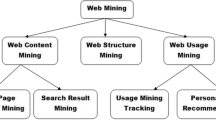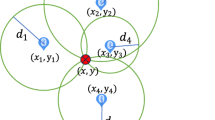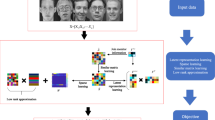Abstract
Due to the sharply increasing number of users and venues in Location-Based Social Networks, it becomes a big challenge to provide recommendations which match users’ preferences. Furthermore, the sparse data and skew distribution (i.e., structural noise) also worsen the coverage and accuracy of recommendations. This problem is prevalent in traditional recommender methods since they assume that the collected data truly reflect users’ preferences. To overcome the limitation of current recommenders, it is imperative to explore an effective strategy, which can accurately provide recommendations while tolerating the structural noise. However, few study concentrates on the process of noisy data in the recommender system, even recent matrix-completion algorithms. In this paper, we cast the location recommendation as a mathematical matrix-completion problem and propose a robust algorithm named Linearized Bregman Iteration for Matrix Completion (LBIMC), which can effectively recover the user-location matrix considering structural noise and provide recommendations based solely on check-in records. Our experiments are conducted by an amount of check-in data from Foursquare, and the results demonstrate the effectiveness of LBIMC.












Similar content being viewed by others
Notes
This service has been separated from Foursquare and was integrated into Swarm APP in May, 2014.
References
Bao J, Zheng Y, Mokbel MF (2012) Location-based and preference-aware recommendation using sparse geo-social networking data. In: Proceedings of the 20th international conference on advances in geographic information systems. ACM, pp 199–208
Baral R, Li T (2016) Maps: a multi aspect personalized poi recommender system. In: Proceedings of the 10th ACM conference on recommender systems. ACM, pp 281–284
Baral R, Wang D, Li T, Chen S-C (2016) Geotecs: exploiting geographical, temporal, categorical and social aspects for personalized poi recommendation. In: IEEE 17th international conference on information reuse and integration (IRI), 2016. IEEE, pp 94–101
Bregman LM (1967) The relaxation method of finding the common point of convex sets and its application to the solution of problems in convex programming. USSR Comput Math Math Phys 7(3):200–217
Cai J-F, Candès EJ, Shen Z (2010) A singular value thresholding algorithm for matrix completion. SIAM J Optim 20(4):1956–1982
Candes EJ, Plan Y (2010) Matrix completion with noise. Proc IEEE 98(6):925–936
Candès EJ, Recht B (2009) Exact matrix completion via convex optimization. Found Comput Math 9(6):717–772
Chen L, Yang G, Chen Z, Xiao P, Chen S (2014) Linearized bregman iteration algorithm for matrix completion with structural noise. Chin J Comput 37:1–17
Cheng C, Yang H, King I, Lyu MR (2012) Fused matrix factorization with geographical and social influence in location-based social networks. In: Twenty-sixth AAAI conference on artificial intelligence
Combettes PL, Wajs VR (2005) Signal recovery by proximal forward–backward splitting. Multiscale Model Simul 4(4):1168–1200
Donoho DL (2006) Compressed sensing. IEEE Trans Inf Theory 52(4):1289–1306
Goldstein T, Osher S (2009) The split bregman method for l1-regularized problems. SIAM J Imaging Sci 2(2):323–343
Jindal N, Liu B (2008) Opinion spam and analysis. In: Proceedings of the 2008 international conference on web search and data mining. ACM, pp 219–230
Keshavan R, Montanari A, Oh S (2009) Matrix completion from noisy entries. In: Advances in neural information processing systems, pp 952–960
Li H, Hong R, Zhu S, Ge Y (2015) Point-of-interest recommender systems: a separate-space perspective. In: IEEE international conference on data mining (ICDM), 2015. IEEE, pp 231–240
Lim E-P, Nguyen V-A, Jindal N, Liu B, Lauw HW (2010) Detecting product review spammers using rating behaviors. In: Proceedings of the 19th ACM international conference on information and knowledge management. ACM, pp 939–948
Lin C-J (2007) Projected gradient methods for nonnegative matrix factorization. Neural Comput 19(10):2756–2779
Liu B, Xiong H, Papadimitriou S, Fu Y, Yao Z (2015) A general geographical probabilistic factor model for point of interest recommendation. IEEE Trans Knowl Data Eng 27(5):1167–1179
Liu B, Fu Y, Yao Z, Xiong H (2013) Learning geographical preferences for point-of-interest recommendation. In: Proceedings of the 19th ACM SIGKDD international conference on Knowledge discovery and data mining. ACM, pp 1043–1051
Luo X, Zhou M, Xia Y, Zhu Q (2014) An efficient non-negative matrix-factorization-based approach to collaborative filtering for recommender systems. IEEE Trans Ind Inf 10(2):1273–1284
Ma S, Goldfarb D, Chen L (2011) Fixed point and Bregman iterative methods for matrix rank minimization. Math Program 128(1–2):321–353
Macedo AQ, Marinho LB, Santos RL (2015) Context-aware event recommendation in event-based social networks. In: Proceedings of the 9th ACM conference on recommender systems. ACM, pp 123–130
Melville P, Sindhwani V (2011) Recommender systems. In: Sammut C, Webb G (eds) Encyclopedia of machine learning. Springer, Berlin, pp 829–838
Metzler D, Croft WB (2007) Linear feature-based models for information retrieval. Inf Retr 10(3):257–274
Meyer CD (2000) Matrix analysis and applied linear algebra, vol 2. Siam, Philadelphia
Mukherjee A, Liu B, Glance N (2012) Spotting fake reviewer groups in consumer reviews. In: Proceedings of the 21st international conference on world wide web. ACM, pp 191–200
Mukherjee A, Liu B, Wang J, Glance N, Jindal N (2011) Detecting group review spam. In: Proceedings of the 20th international conference companion on world wide web. ACM, pp 93–94
Noulas A, Scellato S, Lathia N, Mascolo C (2012) A random walk around the city: New venue recommendation in location-based social networks. In: Privacy, Security, Risk and Trust (PASSAT), 2012 International Conference on and 2012 International Confernece on Social Computing (SocialCom). IEEE, pp 144–153
Parikh N, Boyd SP (2014) Proximal algorithms. Found Trends Optim 1(3):127–239
Ran AC, Reurings MC (2004) A fixed point theorem in partially ordered sets and some applications to matrix equations. Proc Am Math Soc 132:1435–1443
Recht B (2011) A simpler approach to matrix completion. J Mach Learn Res 12:3413–3430
Rendle S, Freudenthaler C, Gantner Z, Schmidt-Thieme L (2009) Bpr: Bayesian personalized ranking from implicit feedback. In: Proceedings of the twenty-fifth conference on uncertainty in artificial intelligence. AUAI Press, pp 452–461
Rockafellar RT (2015) Convex analysis. Princeton University Press, Princeton
Salakhutdinov R, Mnih A (2011) Probabilistic matrix factorization. In: NIPS, vol 20, pp 1–8
Shani G, Gunawardana A (2011) Evaluating recommendation systems. In: Ricci F, Rokach L, Shapira B, Kantor PB (eds) Recommender systems handbook. Springer, Berlin, pp 257–297
Xia B, Ni Z, Li T, Li Q, Zhou Q (2017) Vrer: context-based venue recommendation using embedded space ranking SVM in location-based social network. Expert Syst Appl 83:18–29
Ye M, Yin P, Lee W-C, Lee D-L (2011) Exploiting geographical influence for collaborative point-of-interest recommendation. In: Proceedings of the 34th international ACM SIGIR conference on Research and development in Information Retrieval. ACM, pp 325–334
Zhang L, Yang T, Jin R, Zhou Z-H (2015) Stochastic proximal gradient descent for nuclear norm regularization. arXiv preprint arXiv:1511.01664
Zhou W, Li T, Shwartz L, Grabarnik GY (2015) Recommending ticket resolution using feature adaptation. In: 11th international conference on network and service management (CNSM), 2015. IEEE, pp 15–21
Zhou W, Tang L, Li T, Shwartz L, Grabarnik GY (2015) Resolution recommendation for event tickets in service management. In: 2015 IFIP/IEEE international symposium on integrated network management (IM). IEEE, pp 287–295
Acknowledgements
We want to thank Dr. Lei Chen for insightful discussions on matrix completion. We would also want to thank the editor and reviewers for their useful comments and suggestions for improving the paper. The work was supported in part by the National Science Foundation under Grant Nos. IIS-1213026 and CNS-1461926, Chinese National Natural Science Foundation under grant 91646116, and Scientific and Technological Support Project (Society) of Jiangsu Province (No. BE2016776).
Author information
Authors and Affiliations
Corresponding authors
Additional information
Responsible editor: G. Karypis.
Rights and permissions
About this article
Cite this article
Xia, B., Li, T., Li, Q. et al. Noise-tolerance matrix completion for location recommendation. Data Min Knowl Disc 32, 1–24 (2018). https://doi.org/10.1007/s10618-017-0516-z
Received:
Accepted:
Published:
Issue Date:
DOI: https://doi.org/10.1007/s10618-017-0516-z




